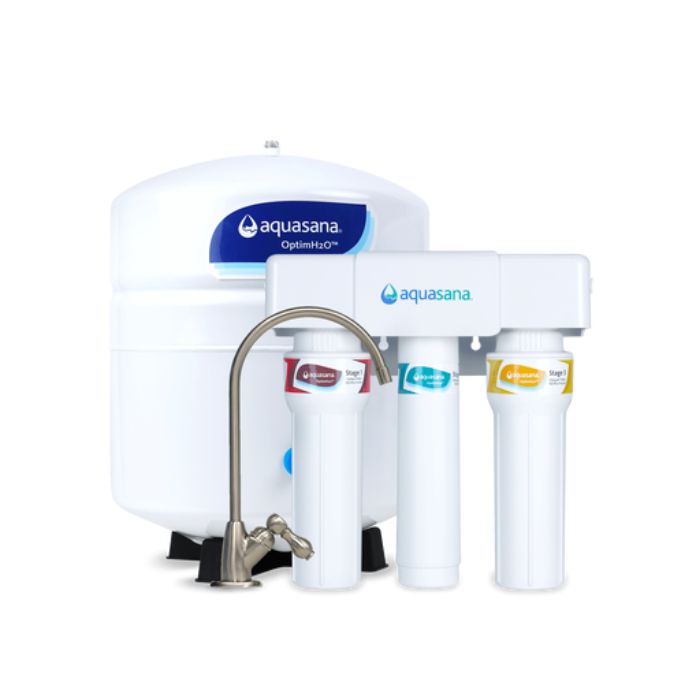Golf Courses and Parkinson's Risk
When the new JAMA Network Open study linking living near golf courses to nearly double the odds of Parkinson’s disease crossed my desk, I wasn’t surprised — but I was deeply concerned. In fact, some of my sickest patients live on golf courses.
In functional medicine, we’ve known for years that chronic exposure to pesticides and herbicides can chip away at the nervous system, gut, and immune function long before symptoms ever appear.
But what this study did so clearly was quantify something many people overlook:
Your zip code can quietly shape your neurological health just as much as your genetics.
And for anyone living near manicured, chemically maintained landscapes — especially golf courses — this is a wake-up call.
What the study found:
The JAMA study looked at more than 400 incident PD cases and about 5,100 matched controls in southern Minnesota and western Wisconsin (1991–2015) via the Rochester Epidemiology Project. JAMA Network+1
Here are the headline results:
Living within one mile of a golf course was associated with an adjusted odds ratio (aOR) of 2.26 for Parkinson’s disease compared with living more than six miles away. American Parkinson Disease Association+3PubMed+3JAMA Network+3
Living in a municipal water‐service area that included a golf course (i.e., your drinking water might serve that area) had an aOR ~ 1.96 compared with areas without a golf course. PubMed+1
In areas with “vulnerable groundwater” (geology/soil that makes contamination more likely) AND a golf course in the water‐service area, the odds were ~1.82 times higher. PubMed+1
The association held even when accounting for distance beyond ~3 miles: risk decreased by ~9% for each additional mile from a golf course beyond that. News-Medical+1
The authors emphasize association, not proven causation—i.e., the study did not directly measure pesticide levels in drinking water or air, but it used proximity + groundwater vulnerability as strong proxies for exposure. Science Media Centre+1
In functional-medicine terms, this study suggests that environmental pesticide exposure, especially via contaminated drinking water or airborne drift from adjacent manicured landscapes, may be a modifiable risk factor for neurodegenerative conditions like Parkinson’s Disease. The study authors point out that pesticide application on U.S. golf courses can be up to 15-times higher than in Europe.
Why does this matter in the context of Vibrant Health?
Nervous system vulnerability – Parkinson’s disease involves the gradual loss of dopamine‐producing neurons in the substantia nigra, with resultant motor and non‐motor symptoms. Many environmental toxins, including certain pesticides (for example paraquat, rotenone) have been shown in lab/animal settings to produce Parkinson-like neurodegeneration. Parkinson’s Foundation+1 So reducing exposure to neurotoxins is fully consistent with our preventative and restorative care model.
Intersection with detox & mitochondrial health – Pesticides often act as mitochondrial toxins, oxidative stress triggers, and may impair cellular autophagy/mitophagy (all areas we monitor in functional medicine). Minimizing ongoing toxic burden supports healthier detox pathways, less “wear and tear,” and better resiliency.
Water + air quality = foundational medicine – One of the core tenets of our community and program is “first clean the terrain.” Because the study indicates two key exposure routes (groundwater/water supply + airborne drift/air exposure), it reinforces why we prioritize home environment interventions before or alongside supplement protocols.
Gut–brain connection – While the study did not examine the gut microbiome directly, we know from our work that environmental toxins can drive dysbiosis, leaky gut, inflammation, and neuroimmune activation. In other words: environmental pesticide burden is not just about the brain; it is intimately connected to the gut microbiome, immune system, detox pathways, and the “whole-system” model we teach.
What You Can Do if You Live On a Golf Course:
If you live near a golf course (or in any region where heavy pesticide/herbicide/fertilizer use is likely), here are some of the strategies I incorporate in my practice and personally into my home environment. I’ll include two devices we recommend (and that many of our community members are using).
1. Water Filtration
Since the study identified municipal water service areas that included golf courses as having significantly elevated risk, and vulnerable groundwater regions as a further risk amplifier, having a robust reverse‐osmosis (RO) or high‐performance under‐sink/whole-house water filter is a key line of defense. JAMA Network+1
One system I often recommend:
Aquasana SmartFlow Reverse Osmosis Water Filter – This is a high-efficiency under‐sink RO system certified for pesticide/herbicide removal, heavy metals, chlorine, etc.
Why it matters: By removing or greatly reducing pesticide/herbicide residues in your tap water, you reduce your internal toxic burden—and thus lighten the detox load on your liver, kidneys, gut, and nervous system.
Tip: Even with RO, maintain a re-mineralization or alkaline filter downstream if you’re concerned about very low mineral content. And test your water (both pre- and post-filter) if possible.
2. Air Filtration
Airborne drift and dust particles can carry pesticide residues — the study authors noted that the association between proximity and PD risk may also reflect airborne exposure, especially in urban areas with dense population near courses. JAMA Network+1
One device our community uses:
Molekule Air Pro HEPA Air Purifier – A high-performance air purifier with HEPA + advanced filtration (PECO technology), ideal for capturing fine particulates, pesticide residue in dust, and volatile organic compounds (VOCs) that may accompany pesticide/herbicide use.
Why it matters: Clean indoor air lowers your inhalational burden of toxins, reduces secondary dust exposures, and supports better respiratory, immune and nervous system health.
Tip: Place it in your main living area or bedroom; keep air changes per hour high. Regularly replace filters and maintain the device
3. Additional Habits & Environmental Controls
Beyond filtration devices, here are habits I encourage:
Test your private well or municipal water source, especially if you suspect proximity to high-usage pesticide sites (golf courses, farm fields, landscaped estates). Ask about pesticide/herbicide residues, nitrates, depth of wells, groundwater vulnerability.
Use a full-house filter or point-of‐entry system if you have reason to doubt your municipal water supply (especially in vulnerable geology).
Seal or improve dust control: Vacuum with a HEPA vacuum, damp-dust surfaces, minimise tracked-in soil from outdoor areas (especially if you or family members work or walk near treated zones).
Landscape awareness: If your property borders a golf course or a landscaped area, inquire about their pesticide/herbicide practices. Consider whether there is drift, buffer zones, and whether you can request notification of spraying.
Support your body’s detox & nervous system resilience: Given the potential exposure risk, ensure your diet, gut microbiome, liver detox pathways, and mitochondrial health are optimized (we cover this in our patient programs).
Advocate for safer landscaping: Whenever possible, support community / course efforts to reduce pesticide use, adopt integrated pest management (IPM) practices, and educate neighbours about drift and groundwater contamination risk.
Final Thoughts on Golf Courses and Parkinson's Disease Risks:
While the JAMA study shows strong associations, it does not prove causation, and the authors themselves acknowledge that occupational exposures, genetic predisposition, and other environmental toxins (air pollution, heavy metals, etc.) were not fully accounted for.
The study was geographically limited (southern Minnesota / western Wisconsin) and primarily white participants—so generalizability is not guaranteed.
And remember: “living near a golf course” is a proxy measure for exposure; the actual pesticide/herbicide levels in water, air, or dust were not measured directly. So the links are strong but indirect.
That said: from a functional-medicine mindset, I believe this is meaningful because we operate under the principle of precautionary risk reduction. Even if the risk isn’t 100% proven, why not reduce avoidable exposures when we can?
If you live near a golf course, or in an area with landscaped turf managed with heavy chemical inputs—or you simply want to proactively reduce your environmental load—then the findings of this JAMA Network Open study offer a call to action. We can’t go back and eliminate every exposure in the past, but we can focus on what lies ahead.
At Tringali Vibrant Health, our mission is to help you build a home and body environment that supports vibrant health, not one that quietly chips away at your foundations over decades. This study reminds us that the environment inside and outside our home walls matters deeply.
If you’d like to explore how to implement these filtration systems, assess your home for other potential exposures, or integrate this into your monthly Membership or course work (for example in our gut–brain or detox modules), we’d be glad to support you.

Elizabeth Tringali, PA-C
Elizabeth Tringali, PA-C is an expert in functional medicine. With over 20 years of experience, Elizabeth is renowned for her holistic approach to health, uncovering the root causes of conditions such as autoimmune diseases, thyroid disorders, hormone imbalances, gut health issues, and more. Her blend of traditional and integrative medicine ensures patients receive comprehensive care tailored to their unique needs.










